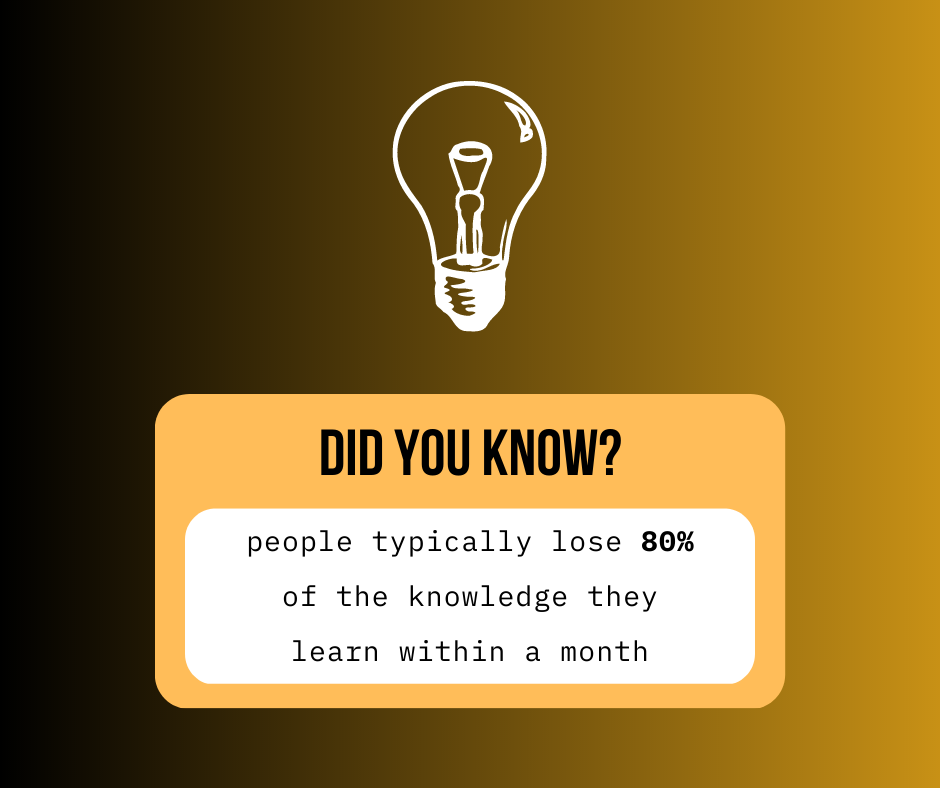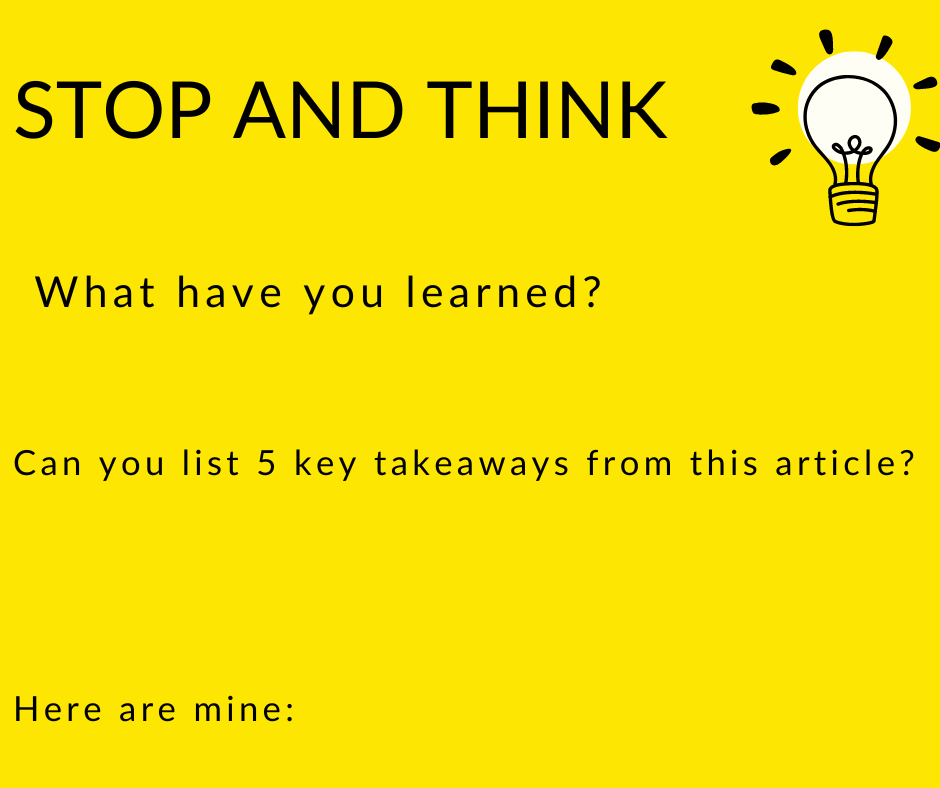Challenges and Benefits of Microlearning

In today's fast-paced world (such a popular phrase these days), microlearning has emerged as an effective approach to education and skill development. While this learning method offers numerous benefits, it also comes with its own set of challenges. This article explores the most common challenges of microlearning and provides practical solutions to help overcome them. By understanding how microlearning is influenced by the Hermann Ebbinghaus forgetting curve, we can better appreciate its potential for improving knowledge retention and optimising learning outcomes. Dive into the world of microlearning, and discover how to address its challenges and harness its full potential for success.
In this article:
Leveraging the Forgetting Curve in Microlearning
The concept of microlearning is closely related to Hermann Ebbinghaus's forgetting curve, a psychological theory from the 1880s that describes how quickly learned information is forgotten over time.
If you are wondering if anything has changed since then, some researchers (1) replicated the forgetting curve and showed that we still tend to forget in a way Ebbinghaus suggested.

Ebbinghaus found that memory retention declines rapidly at first, then levels off as time passes. However, he also discovered that revisiting or reinforcing the learned information could help to mitigate this decline and improve long-term retention.
Microlearning is based on this understanding of the forgetting curve, as it seeks to address the challenges of memory retention by delivering content in small, focused chunks that are easier to absorb and remember. This approach makes it more likely that learners will retain the information they acquire, as it reduces the cognitive load associated with processing complex or lengthy material.
Additionally, microlearning often incorporates elements of spaced repetition, which involves revisiting learned content at gradually increasing intervals. This reinforcement helps to consolidate the information in long-term memory, counteracting the effects of the forgetting curve. By presenting content in a way that aligns with how our brains naturally process and retain information, microlearning helps to optimise learning outcomes and improve memory retention.
Challenges of Implementing Microlearning
While microlearning offers many benefits, it also comes with some challenges. If you want to learn more about the benefits of this learning approach, this article is for you!
Some of the most common challenges include:
1. Content simplification: One of the key principles of microlearning is breaking down complex information into smaller, more manageable chunks. This can be challenging, as it requires careful consideration of how to present the material in a way that is both concise and comprehensive. Simplifying content too much might lead to a loss of critical information or context, while not simplifying it enough can defeat the purpose of microlearning.
2. Ensuring learner engagement: Microlearning often relies on digital platforms and self-paced learning, which can make it difficult to ensure that learners remain engaged and motivated.
3. Balancing depth and breadth: Microlearning is designed to provide focused, targeted learning experiences, which can sometimes make it difficult to cover broader or more complex topics.
4. Integration with existing curricula or training programs: Implementing microlearning in educational institutions or organisations may require adapting existing curricula or training programs to accommodate the microlearning approach. This can be a time-consuming and resource-intensive process, especially if there is resistance to change or a lack of understanding about the benefits of microlearning.
6. Maintenance and updating: Microlearning content should be regularly reviewed and updated to ensure that it remains accurate and relevant. This can be challenging and time-consuming, especially in fast-changing fields or industries.
7. Learner support: Providing adequate support to learners in a microlearning environment can be more difficult compared to traditional learning settings. Since microlearning is often self-paced and asynchronous, instructors need to find ways to offer guidance, answer questions, and facilitate discussions among learners, even when they are not physically present.
8. Fragmented learning: The risk of fragmented learning arises when using the microlearning approach if the small, focused learning modules are not effectively connected or integrated, leading to a disjointed learning experience. Learners may acquire isolated pieces of information without gaining a comprehensive understanding of the broader topic or context. This fragmentation can hinder the development of higher-order thinking skills and the ability to apply knowledge to real-world situations.
To overcome these challenges, it's essential to plan and design microlearning experiences carefully, taking into account the:
- specific needs of the learner
- subject matter, and
- learning objectives.
By addressing these challenges, instructors can create effective microlearning experiences that enhance engagement, retention, and learning outcomes.
Overcoming Microlearning Challenges: Effective Solutions
Here are some possible solutions to address the common challenges of microlearning:
- Collaborate with subject matter experts (SMEs) to ensure accurate and comprehensive content. SME knows WHAT to include, learning designer ensures the HOW.
- Focus on essential information and use clear, concise language.
- Use multimedia elements, such as visuals and animations, to aid understanding.
- Incorporate interactive elements, such as quizzes, simulations, or discussions.
- Use multimedia content, such as videos and infographics, to keep learners interested.
- Provide opportunities for feedback, collaboration, and peer-to-peer learning.
- And don't forget the power of serious games! Some authors (2) define serious games as the use of interactive digital technologies for training and education in private, public, government, and military sectors. As such, they can include role-play experiences, and social-process, immersive simulations for exploring interpersonal development, adaptive thinking, combat tactics, emergency response, diplomacy, governance, health, education, management, logistics, and leadership.
- Design a series of interconnected microlearning modules to cover broader topics.
- Use supplementary resources, such as readings or videos, to provide additional context.
- Encourage learners to explore related content and engage in further self-directed learning.
- Identify opportunities to incorporate microlearning into existing courses or training sessions. Here are a few steps that can help you with that:
Analyse the existing content: Begin by thoroughly reviewing the current course materials or training program to identify topics or concepts that could benefit from a microlearning approach. Look for complex or challenging content that might be better understood if broken down into smaller, more manageable chunks.
Determine learning objectives: Clearly define the specific learning objectives for each topic or concept. This will help you identify the most critical elements that should be included in your microlearning modules and ensure that they align with the overall goals of the course or training program.
Identify suitable formats: Based on the content and learning objectives, determine which microlearning formats would be most effective. Possibilities include short videos, interactive simulations, quizzes, infographics, or flashcards. Choose formats that best suit the subject matter and the preferences of your target audience.
Integrate microlearning modules: Incorporate the microlearning modules into the existing course or training program by:
- Replacing or supplementing traditional lectures or presentations.
- Providing microlearning modules as pre-work or homework assignments.
- Using microlearning modules to reinforce key concepts or to provide additional practice opportunities.
- Offering microlearning modules as optional resources for learners who need extra support or who wish to explore topics in greater depth.
Monitor and evaluate: Track the progress and performance of learners who engage with the microlearning modules. Collect feedback from learners and instructors to evaluate the effectiveness of the microlearning approach and identify areas for improvement. Continuously refine and adjust the microlearning content and integration strategies to ensure optimal learning outcomes.
- Communicate the benefits of microlearning to stakeholders and decision-makers.
- Seek feedback from learners and instructors to refine the integration process.
- Provide training and support for instructors in creating and managing digital microlearning content.
- Ensure all learners have access to the necessary technology, devices, and reliable internet connections.
- Opt for responsive design and choose a platform that is compatible with various devices and operating systems.
- Think out of the box! How about identifying their needs and delivering microlearning modules through communication channels like Teams or Slack?
- Establish a regular review process to identify outdated or inaccurate content.
- Assign responsibility for updating microlearning materials to specific team members or stakeholders.
- Monitor changes in the subject matter or industry to ensure timely updates.
- Offer multiple channels for learners to ask questions and receive guidance, such as forums, email, or chat features.
- Encourage peer-to-peer interactions and create opportunities for collaborative learning.
- Schedule regular check-ins or virtual office hours for learners to discuss their progress and address any concerns.
8. Fragmented learning:
To mitigate this risk, it is essential to carefully design microlearning experiences that maintain a clear connection between individual modules and ensure that they collectively contribute to overarching learning objectives. So when dividing your online training courses into small nuggets, it’s crucial that they are still consistent with each other and connected.
By implementing these solutions, you can address the common challenges associated with microlearning and create effective, engaging learning experiences that promote knowledge retention and skill development.

Key Takeaways
Microlearning enhances learning outcomes by delivering content in small, focused chunks that are easier to absorb, retain, and apply.
Incorporating microlearning into existing courses or training sessions requires a thorough analysis of the content, learning objectives, and suitable formats to ensure optimal results.
Addressing the challenges of microlearning, such as content simplification, learner engagement, and assessment, is crucial for creating an effective learning experience.
Providing learners with adequate support, such as multiple channels for communication, peer-to-peer interactions, and regular check-ins, can enhance the effectiveness of microlearning.
Understanding the influence of the Hermann Ebbinghaus forgetting curve on microlearning can help educators create learning experiences that optimise knowledge retention and learning outcomes.
Regularly reviewing and updating microlearning content is essential to ensure its accuracy, relevance, and alignment with current industry trends or developments.
Successfully integrating microlearning into existing curricula or training programs requires clear communication of its benefits, collaboration with stakeholders, and a commitment to continuous improvement.
Suggested reading on the topic:
(1) Murre JMJ., Dros, J. (2015). Replication and Analysis of Ebbinghaus’ Forgetting Curve. PLoS ONE 10(7): e0120644. doi:10.1371/journal. pone.0120644
(2) You can read more about the concept of serious games in: Raybourn, E. (2014).
A new paradigm for serious games: Transmedia learning for more effective training and education. Journal of Computational Science, 5 (3). pp. 471-481,


